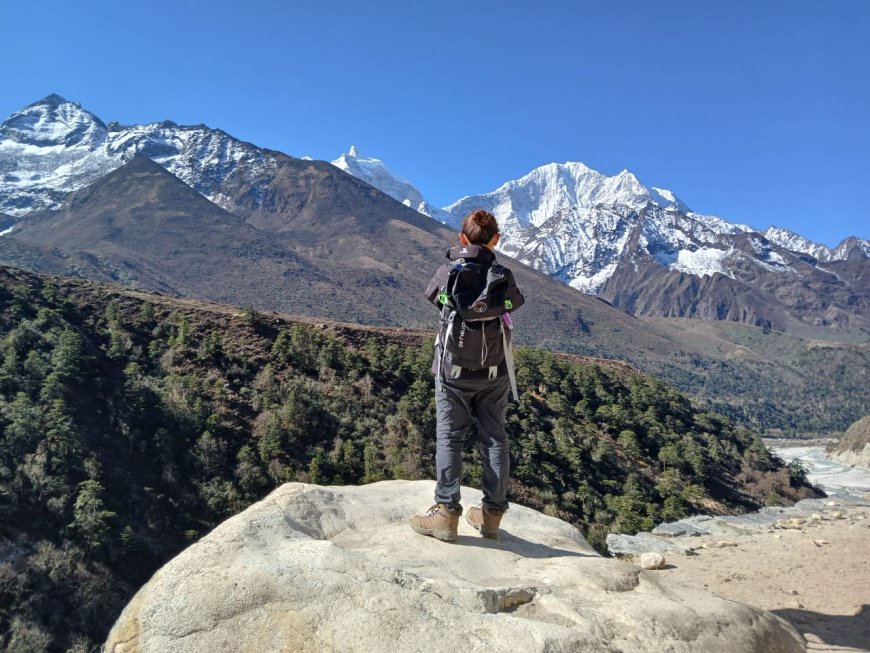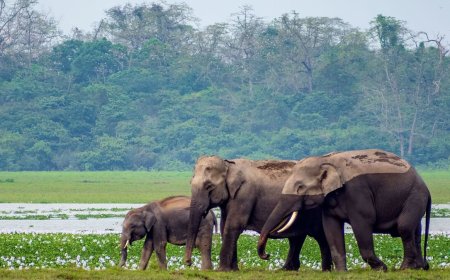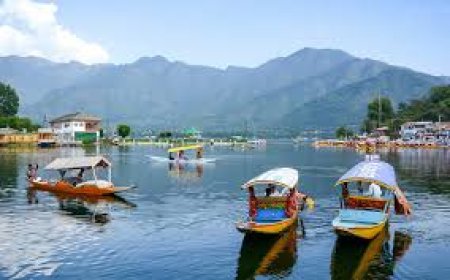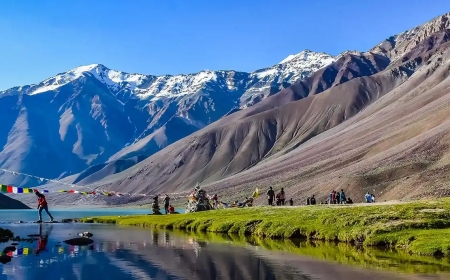How to Get Help in an Emergency on the Everest Base Camp Trek
Follow in the footsteps of legends on the Everest Base Camp trek.

If you find yourself in trouble while trekking to Everest Base Camp, knowing how to get help fast is important. TheEverest Base Camp Trek area is pretty remote, so even though a lot of people hike there, it can be tough to get help quickly. Heres what you should do if an emergency happens.
First, try to stay calm and figure out whats going on. If you can, let your guide or porter know right away. They have the experience to handle these situations and know the best routes to get medical help. Many trekking companies provide satellite phones, so if you're in a tough spot, reaching out to your guide is key to getting the ball rolling.
In serious emergencies, getting a helicopter might be the quickest way to get to a hospital. Helicopter services are available all year in the Everest area, with the closest hospitals being in Lukla or Kathmandu, depending on what you need. Your trekking company will usually sort out the helicopter if it comes to that, but having good insurance is a must to cover evacuation costs.
You can also find local tea houses along the trail that act as communication centers. If youre near one, you can use their satellite phones to call for help. Plus, other trekkers around might lend a hand, whether thats sharing supplies or pointing you towards the nearest place with medical help.
To be ready for emergencies, make sure you have travel insurance that covers high-altitude rescue and medical evacuation. Keep emergency contacts handy, and stay in touch with your guide and group to make sure everyone stays safe during the trek.
Understanding Emergency Protocols on the Everest Base Camp Trek
It's really important to know emergency procedures before you start your trek to Everest Base Camp. Each trekking company has specific steps for dealing with emergencies, like contacting guides, porters, or local tea houses right away. If things get serious, guides can organize helicopter rescues to the nearest hospital. Make sure to go over these protocols in your pre-trek briefings so you're ready for anything, whether it's injuries, altitude sickness, or bad weather. Some trekking companies even have satellite phones for direct contact with rescue teams or local help, so knowing these details can make a big difference if something goes wrong.
How to Stay in Communication During Your Trek
Keeping in touch while trekking to Everest Base Camp is key for staying safe. Most trekking companies give you access to satellite phones, which help you stay connected with your guides or emergency services if needed. Along the way, many teahouses have satellite phone services too. If you find yourself in trouble, let your guide know right away. They'll take it from there and coordinate with local teams for a possible evacuation. Checking in with your group often helps everyone stay informed and safe.
The Role of Sherpas and Local Guides in Emergencies
Sherpas and local guides are super important when it comes to emergencies on the Everest Base Camp trek. They're trained to handle high-altitude rescues and know how to act in tough situations. If someone gets hurt or sick, Sherpas are usually the first ones to help out and can manage evacuations. They know where the nearest hospitals are and the fastest routes to get there. Plus, guides have experience working with helicopter services for urgent evacuations. Following their expert advice is crucial during stressful times.
Preparing for High-Altitude Illnesses and Emergencies
High-altitude illnesses like Acute Mountain Sickness (AMS) are pretty common on the Everest Base Camp trek, with symptoms ranging from headaches to dizziness and nausea. To avoid issues, make sure to acclimatize properly and take your time climbing. If you start noticing AMS symptoms, tell your guide right away and rest at a lower altitude. If things get serious, theyll arrange for a helicopter to get you to a lower elevation or medical facility. Bringing along medication for altitude sickness and having good travel insurance that covers evacuations and treatment will help you feel more prepared.
How to Use Emergency Evacuation Services
When things get really bad and you can't walk or trek anymore, a helicopter evacuation is often the quickest way to get help. The Everest region has good helicopter services that can quickly take you to Kathmandu or Lukla for further treatment. Just make sure you have travel insurance that covers helicopter evacuations and high-altitude rescues. Your guide will handle the coordination with rescue teams for you. Make sure your insurance also covers the costs of evacuation, which can be quite high at altitude. Being ready with insurance and knowing how to access these services can be life-saving in emergencies.
Why Travel Insurance is Key for Everest Base Camp
If you're planning to trek to Everest Base Camp, having good travel insurance is a must. Your policy should cover things like medical evacuation, trip cancellations, lost luggage, and emergency medical expenses. In case something goes wrongwhether its altitude sickness or an injuryyou'll need that insurance to help cover the pricey evacuation costs that can come up in remote locations. Make sure your insurance specifically covers trekking up to 6,000 meters, which is the height of Everest Base Camp. Also, check that it includes helicopter evacuations, as these are often necessary in serious situations. Keep a copy of your insurance policy and emergency contact info handy to give you peace of mind on the trek.
What to Do When the Weather Turns Bad on the Trek
Bad weather, like snowstorms, heavy rain, or strong winds, can be dangerous on the Everest Base Camp trek. When things get rough, find a safe place to wait it out, like a teahouse. Let your guide or other trekkers know what's happening. If the weather gets really bad or you can't move, your guide will help get you to safety or find shelter. Always be ready for sudden weather changes by bringing waterproof clothes, gloves, and layers. Having a backup plan and staying updated about the weather will help keep you safe.
Local Emergency Resources Along the Route
Along the Everest Base Camp route, local places like teahouses and trekking agencies are super helpful in emergencies. Many teahouses have satellite phones for emergency calls and keep basic first-aid supplies. They usually know the nearest hospitals or how to get help. Trekking companies often have connections to local rescue teams, which is crucial if something goes wrong. Knowing where these resources are can make a big difference, especially in remote areas where medical help might be far away.
Helicopter Rescue and How to Access It
Helicopter rescues can be the quickest way to get help during a serious situation on the Everest Base Camp trek. If you have a severe case of altitude sickness, an injury, or something life-threatening, getting airlifted can save you a lot of time. Your trekking guide will work with local helicopter services to set up the rescue. Its important to have insurance that includes helicopter rescues since they can be expensive. These rescues usually happen from places like Lukla, Namche, or even Everest Base Camp in really tough situations. Make sure you know how to reach rescue services through your guide or trekking company.
The Importance of a First-Aid Kit and Emergency Supplies
Bringing a first-aid kit is essential for your trek to Everest Base Camp. In emergencies, basic supplies like bandages, antiseptics, pain meds, blister treatment, and altitude sickness medication can be lifesavers. Your kit should also have a thermometer, scissors, tweezers, and any personal meds you need. Besides the first-aid kit, it's good to carry an emergency whistle, a multi-tool, and extra batteries for your flashlight. If youre in a remote area, your guide might have extra supplies or first-aid training. Being prepared with these essentials can really help you stay safe if something happens.
Who Helps You Up at Mount Everest?
When you trek to Everest Base Camp, plenty of people and groups have your back to keep you safe and guide you along the way. The Sherpas are the most important at this. They know the Everest area inside and out and help carry your gear, find the right path, and ensure everyone stays safe. Trekking guides are also key. They give advice on how to deal with altitude, help plan your route, and focus on safety. Porters take on the heavy luggage, which makes everything a lot easier. If there's a serious issue, the Nepalese government and rescue teams, like the Sagarmatha Pollution Control Committee, organize evacuations. Helicopter teams are ready for emergencies. Sherpas and guides are really crucial for keeping trekkers safe and helping out when problems arise.
What Is the Easiest Way to Get to Everest Base Camp?
The easiest way to reach Everest Base Camp is to fly from Kathmandu to Lukla, Nepal. Lukla is known for being one of the world's most exciting airports and is the starting point for most trekkers. From there, youll trek for about 12 days (round-trip), passing through beautiful villages, old monasteries, and thick forests until you reach Base Camp. The trail is clear, and youll have plenty of help from local guides and porters. Although it is a tough trek, you dont need climbing skills. Some trekkers choose to spend extra days in places like Namche Bazaar to get used to the altitude. While its challenging, taking your time, drinking water, and resting helps you enjoy the trek and lowers the chances of feeling sick from the altitude.
Are There Rescue Teams for Mount Everest?
Absolutely! Rescue teams are working around Mount Everest for both trekkers and climbers. The Nepalese government and private companies handle these rescue operations. They usually involve helicopters that can quickly transport people with altitude sickness, injuries, or other emergencies to the nearest hospitals in Kathmandu or Lukla. Many trekking companies offer insurance that covers rescue, which is important because evacuation can be pricey. Sherpas and guides are often the first to help, offering first aid and helping you get to safety or coordinating with rescue teams. If something goes wrong, you can call for help from the closest teahouse or use a satellite phone.
How Do You Get Back from Everest Base Camp?
Getting back from Everest Base Camp is pretty straightforward since youll take the same path you came in on. Once you reach Base Camp, youll start your descent, which usually takes around 4 to 5 days. Most people retrace their steps through villages like Namche Bazaar and Lukla. Going down is faster and easier than climbing up, but you still need to be careful because of the steep paths. After you get to Lukla, youll fly back to Kathmandu. Its really important to keep an eye on how you feel during the trek, and if youre not feeling well, make sure to get some rest before moving on. Many trekkers prefer to take their time on the way down to take in the beautiful scenery.
Conclusion
The Everest Base Camp trek is an amazing experience, but it does have its challenges. With the help of Sherpas and local guides, along with the rescue teams watching over trekkers' safety, theres solid support all around. Whether youre flying to Lukla to start your trek or making your way back through familiar villages, you can count on a strong network to help you enjoy the trip safely. Proper planning, good gear, and being ready for emergencies are essential for a successful trek. This whole experience gives you a unique chance to see the greatness of Mount Everest while being backed by a dedicated team of local experts and rescue services.



























